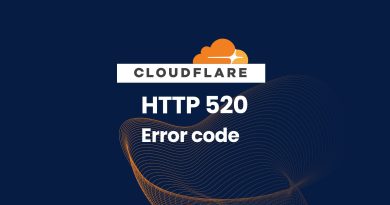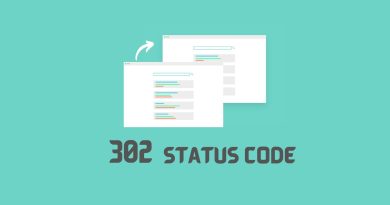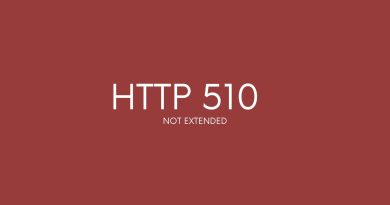HTTP 305 Use Proxy: A Comprehensive Guide To Fix It
The use of proxies has become commonplace for many online activities. They are used in applications such as peer-to-peer file sharing, anonymous surfing and accessing regionally blocked websites. With so much traffic being routed through these intermediary systems, understanding how they work is essential for any user wishing to ensure secure data transmissions and reliable connectivity.
This article explains the mechanics behind HTTP Code 305 Use Proxy, its associated errors and potential solutions.
What Is The Http 305 Use Proxy?
HTTP 305 Use Proxy is an HTTP status code that indicates the requested resource must be accessed through a proxy. The HTTP request requires a valid Proxy-location and Origin Server before being able to access the resource. It is necessary for security concerns, as it prevents malicious actors from accessing sensitive information without authorization.
This status code works as part of the communication between applications or services on different computers connected to the internet. When one application makes a request for a specific resource, this status code will alert them if they need to use a proxy in order to gain access. In some cases, it can also be used when there are privacy restrictions imposed by the origin server which require it.
The HTTP 305 Use Proxy response is generated by an intermediary server such as a web cache or firewall instead of the actual origin server itself. This means that clients must make sure their requests follow all applicable rules and regulations before attempting to retrieve any resources from another site. Understanding how this status code operates can help users better protect their systems and data while navigating online environments with greater efficiency and safety.
Causes Of An Http 305 Use Proxy
HTTP 305 Use Proxy status codes are deprecated but still exist in some HTTP clients. This code is sent by a proxy server when the resource requested requires it to be accessed through the proxy. There can be numerous causes for this, such as security reasons or other constraints on access. When an http client receives an HTTP 305 Use Proxy status code, it must re-initiate the request using the appropriate proxy settings.
The main cause of an HTTP 305 Use Proxy status code is that the target URL has been blocked or redirected due to certain restrictions placed on it. In this case, a proxy server is needed to bypass these restrictions and complete the GET request successfully. Another common reason for receiving an HTTP 305 Use Proxy response from a server is incorrect configuration of your system’s network settings or authentication credentials required for accessing certain websites.
It is important to understand why you are receiving an HTTP 305 Use Proxy response before attempting any fixes. If you receive this type of error regularly, it could indicate that there is something wrong with either your internet connection or your web browser’s settings and preferences. To ensure continued smooth browsing experience, understanding and addressing the underlying issue promptly is recommended.
How To Fix Http 305 Use Proxy
The previous section discussed the causes of an HTTP 305 Use Proxy status code. In order to understand how it can be fixed, we must first recap its purpose and role within the HTTP protocol. An HTTP 305 is a response header sent by the user agent in place of a 3xx redirect when using certain HTTP methods such as POST or PUT. Its purpose is to indicate that instead of being redirected to the target resource, the request should be repeated via another proxy server.
To fix this problem, some steps need to be taken on both sides: from the client-side and from the server side. On the client side, one needs to ensure that they are sending out valid requests with appropriate headers so that the right proxies can be selected for each request. Additionally, if there are any issues with cookies not getting set properly, then these too need to be addressed before attempting further troubleshooting steps. On the server side, one needs to make sure that all response headers related to proxying have been configured correctly so that valid proxies can be chosen for all incoming requests. Additionally, any misconfigurations should also be corrected at this stage in order to avoid potential problems down the line.
Once both sides have been checked and confirmed working optimally, then users should begin seeing fewer instances of ‘HTTP 305 Use Proxy’ errors appearing in their logs. If not resolved at this point however, then further investigation may be required into other similar http status codes which could potentially cause similar issues.
Similar Http Status Codes To Http 304
HTTP codes are used to communicate between web servers and clients. In the case of HTTP code 305, it indicates that a proxy must be used in order for the same request to be fulfilled. It is important to note that not all status codes can be fixed as easily as this one; some require further investigation.
Below is a list of similar HTTP status codes, each with their own implications:
- HTTP 307 – This code will redirect users from the original page they requested to another URL on the same server. It can also be used when a website wants to keep track of visitors’ activities by maintaining previous versions of pages visited.
- HTTP 308 – This status code was created for more efficient use of search engines, allowing them to cache certain responses rather than fetching data every time again from the server.
- Internet Explorer (IE) 118 – This is an IE-specific code indicating that no response has been received yet due to poor connection or other technical issues.
- Stack Overflow 502 – A popular browsers error message displaying when there’s an issue connecting to your right proxy server or any other remote hostname associated with your application stack.
Knowing these different types of HTTP status codes can help you troubleshoot and fix any related problems quickly and efficiently without having to resort to lengthy support threads or external assistance programs.
All HTTP status codes by categories
Informational responses
(100 – 199)


